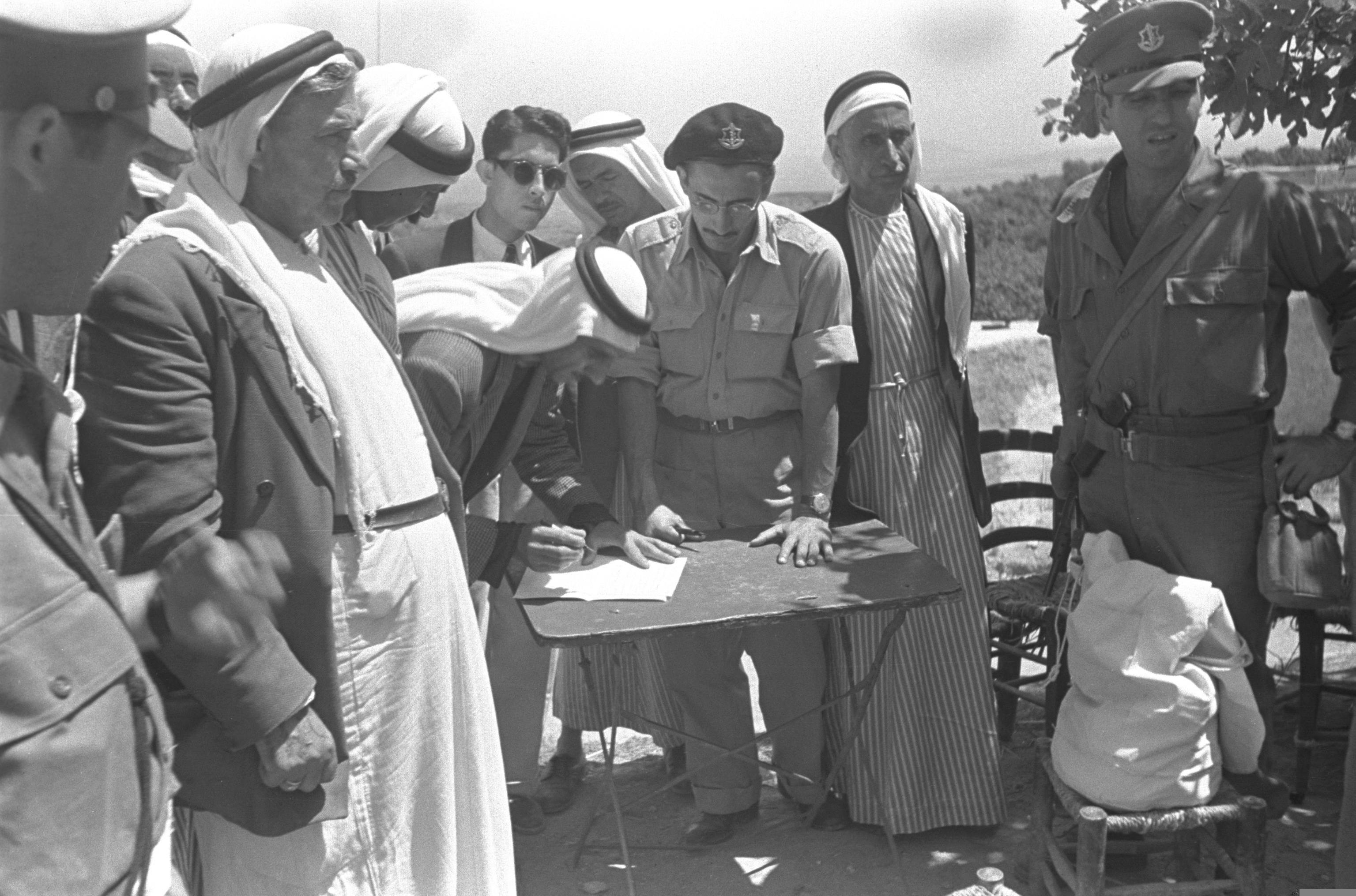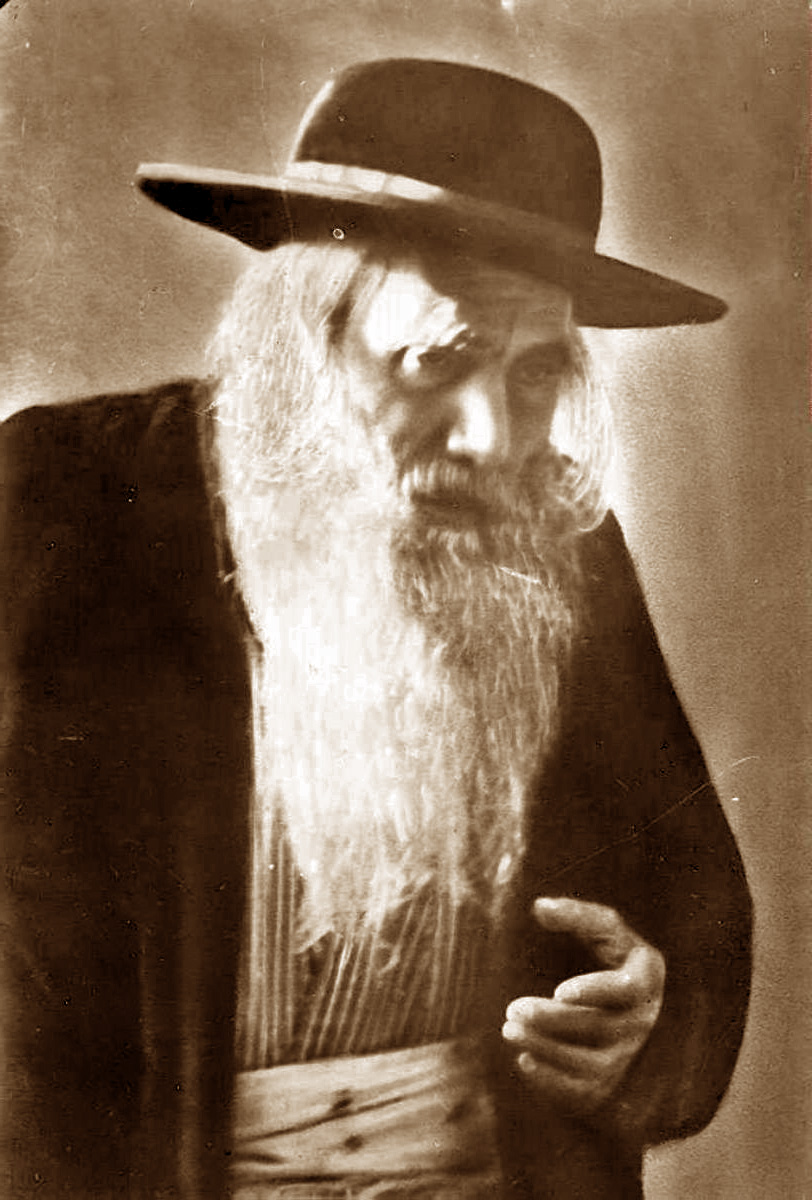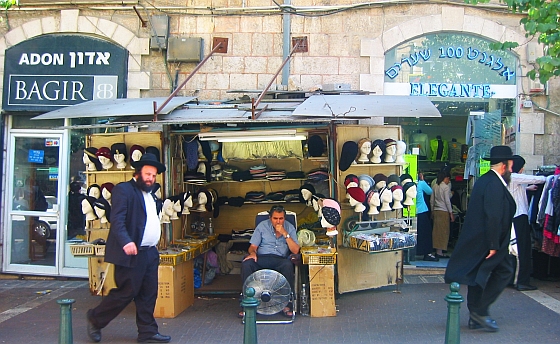|
Meir Auerbach
Rabbi Meir Auerbach (1815–1878) was president of the Jewish court at Koło, and author of ''Imrei Bina'' (Words of Wisdom). After his immigration to Ottoman Palestine in 1859, he headed the Poland Kollel and became the first Ashkenazi Chief Rabbi of Jerusalem. Biography Meir Auerbach was born in Koło in the Duchy of Warsaw. He was a member of the rabbinic Auerbach family. His father was Rabbi Yitzchak Isaac Auerbach, rabbi of Płock and Luntshitz, author of ''Divrei Chaim.'' Auerbach married Hindel of Kalisch. After the death of her husband, Hindel visited his grave on the Mount of Olives together with a group of women. At some point during this outing she disappeared and was never found again. According to rumors, she was seen at a convent. Rabbinic career Auerbach became rabbi of his hometown at the age of 25. In 1846, Auerbach was appointed president of the Jewish beit din in Koło, where he served for nine years. Later he moved to Kalisz, where he served as a rabbi and e ... [...More Info...] [...Related Items...] OR: [Wikipedia] [Google] [Baidu] |
Beit Din
A beit din ( he, בית דין, Bet Din, house of judgment, , Ashkenazic: ''beis din'', plural: batei din) is a rabbinical court of Judaism. In ancient times, it was the building block of the legal system in the Biblical Land of Israel. Today, it is invested with legal powers in a number of religious matters (''din Torah'', "matter of litigation", plural ''dinei Torah'') both in Israel and in Jewish communities in the Diaspora, where its judgments hold varying degrees of authority (depending upon the jurisdiction and subject matter) in matters specifically related to Jewish religious life. History Rabbinical commentators point out that the first suggestion in the Torah that the ruler divest his legal powers and delegate his power of judgment to lower courts was made by Jethro to Moses (Exodus ). This situation was formalised later when God gave the explicit command to "establish judges and officers in your gates" ( Deuteronomy ). There were three types of courts (Mishnah, t ... [...More Info...] [...Related Items...] OR: [Wikipedia] [Google] [Baidu] |
Jewish Quarter (Jerusalem)
The Jewish Quarter ( he, הרובע היהודי, ''HaRova HaYehudi''; ar, حارة اليهود, ''Harat al-Yehud'') is one of the four traditional quarters of the Old City of Jerusalem (part of Israeli-occupied East Jerusalem). The 116,000 square meter area lies in the southwestern sector of the walled city, and stretches from the Zion Gate in the south, along the Armenian Quarter on the west, up to the Street of the Chain in the north and extends to the Western Wall and the Temple Mount in the east. In the early 20th century the Jewish population of the quarter reached 19,000. Rashid Khalidi calculated that the quarter "originally" covered "four or five acres" (c. 16,200-20,250 m2), of which prior to 1948 the Jewish-owned property amounted to less than 20%. The quarter is inhabited by around 2,000 residents and is home to numerous ''yeshivas'' and synagogues, most notably the Hurva Synagogue, destroyed numerous times and rededicated in 2010. The quarter is also the site of ... [...More Info...] [...Related Items...] OR: [Wikipedia] [Google] [Baidu] |
Umm El-Fahm
Umm al-Fahm ( ar, أمّ الفحم, ''Umm al-Faḥm''; he, אוּם אֶל-פַחֶם ''Um el-Faḥem'') is a city located northwest of Jenin in the Haifa District of Israel. In its population was , nearly all of whom are Arab citizens of Israel. The city is situated on the Umm al-Fahm mountain ridge, the highest point of which is Mount Iskander ( above sea level), overlooking Wadi Ara. Umm al-Fahm is the social, cultural and economic center for residents of the Wadi Ara and Triangle (Israel), Triangle regions. Etymology Umm al-Fahm means "Mother of Charcoal" in Arabic. According to local lore, the village was surrounded by forests which were used to produce charcoal. History Several archaeological sites around the city date to the Iron Age#Near East timeline, Iron Age II, as well as the Achaemenid Empire, Persian, Hellenistic, Ancient Rome, Roman, early History of Islam, Muslim and the Middle Ages.Zertal, 2016, p119/ref> Mamluk era In 1265 C.E. (663 H.), after Baybars won t ... [...More Info...] [...Related Items...] OR: [Wikipedia] [Google] [Baidu] |
Arab
The Arabs (singular: Arab; singular ar, عَرَبِيٌّ, DIN 31635: , , plural ar, عَرَب, DIN 31635: , Arabic pronunciation: ), also known as the Arab people, are an ethnic group mainly inhabiting the Arab world in Western Asia, North Africa, the Horn of Africa, and the western Indian Ocean islands (including the Comoros). An Arab diaspora is also present around the world in significant numbers, most notably in the Americas, Western Europe, Turkey, Indonesia, and Iran. In modern usage, the term "Arab" tends to refer to those who both carry that ethnic identity and speak Arabic as their native language. This contrasts with the narrower traditional definition, which refers to the descendants of the tribes of Arabia. The religion of Islam was developed in Arabia, and Classical Arabic serves as the language of Islamic literature. 93 percent of Arabs are Muslims (the remainder consisted mostly of Arab Christians), while Arab Muslims are only 20 percent of the ... [...More Info...] [...Related Items...] OR: [Wikipedia] [Google] [Baidu] |
Balady Citron
The balady citron is a variety of citron, or ''etrog'', grown in Israel and Palestine (region), Palestine, mostly for Jewish ritual purposes. Not native to the region, it was imported around 500 or 300 BCE by either Jewish or Greek settlers. Initially not widely grown, it was promoted and popularized in the 1870s by Rabbi Chaim Elozor Wax. Etymology ''wikt:بلدي, Balady ( ar, بلدي)'' is Arabic for "native." Local Arab farmers began using this name in the mid-19th century to distinguish this variety from the Greek citron, which was cultivated along the Jaffa seashore. The balady citron is an acidic variety, alongside the Florentine citron, Florentine and Diamante citron from Italy, and the Greek citron. History Citrus fruits are not native to Palestine. According to Georges Gallesio, Gallesio, Jews from Babylonia introduced the citron into Judea in around 500 BCE, while Shmuel Tolkowsky, Tolkowsky believed that Greek settlers brought it from India around 200 years lat ... [...More Info...] [...Related Items...] OR: [Wikipedia] [Google] [Baidu] |
Yehoshua Leib Diskin
Moshe Yehoshua Yehuda Leib Diskin (1818–1898), also known as the Maharil Diskin, was a leading rabbi, Talmudist, and Biblical commentator. He served as a rabbi in Łomża, Mezritch, Kovno, Shklov, Brisk, and, finally, Jerusalem, after moving to Eretz Yisrael in 1878. He opened what today is known as the Diskin Orphan Home in 1881. Biography Rabbi Yehoshua Leib Diskin was born on December 8, 1818, in Grodno, then part of the Russian Empire. His father, Binyamin Diskin, was rabbi of that city, (also known as Grodno) then Volkovisk, and later Łomża. He married Hinda Rachel, daughter of Rabbi Broder, and lived with his father-in-law in Wolkowitz. He received rabbinic ordination at the age of 18, and inherited his father's rabbinate of Łomża at the age of 25. Rabbi Diskin's second wife, Sarah, was known as the "Brisker Rebbetzin". She had a very strong mind, and came from a prestigious family descended from Rabbi Yechezkel Landau (the ''Nodah bi-Yehudah'') and Joshua Zei ... [...More Info...] [...Related Items...] OR: [Wikipedia] [Google] [Baidu] |
Yosef Chaim Zonnenfeld
Yosef Chaim Sonnenfeld, also spelled Zonnenfeld (1 December 1848 – 26 February 1932), was the rabbi and co-founder of the Edah HaChareidis, a Haredi Jewish community in Jerusalem, during the years of the British Mandate of Palestine. He was originally given the name "Chaim"; however, the name "Yosef" was added to him while he experienced an illness. Sonnenfeld was born in Verbó in the Austrian Empire. His father, Rabbi Avraham Shlomo Zonnenfeld, died when Chaim was five years old. Sonnenfeld was a student of Rabbi Samuel Benjamin Sofer (the ''Ksav Sofer''), the son of Rabbi Moses Sofer (the ''Chasam Sofer''). He was also a student of Rabbi Avraham Schag in Kobersdorf (who was himself a disciple of the Chasam Sofer); Sonnenfeld moved from the latter city to Jerusalem in 1873. Sonnenfeld became an important figure in Jerusalem's Old City, serving as the right-hand man of Rabbi Yehoshua Leib Diskin and assisting the latter in communal activities, such as the founding of sc ... [...More Info...] [...Related Items...] OR: [Wikipedia] [Google] [Baidu] |
Temple In Jerusalem
The Temple in Jerusalem, or alternatively the Holy Temple (; , ), refers to the two now-destroyed religious structures that served as the central places of worship for Israelites and Jews on the modern-day Temple Mount in the Old City of Jerusalem. According to the Hebrew Bible, the Solomon's Temple, First Temple was built in the 10th century BCE, during the reign of Solomon over the Kingdom of Israel (united monarchy), United Kingdom of Israel. It stood until , when it was destroyed during the Siege of Jerusalem (587 BC), Babylonian siege of Jerusalem. Almost a century later, the First Temple was replaced by the Second Temple, which was built after the Neo-Babylonian Empire was conquered by the Achaemenid Empire, Achaemenid Persian Empire. While the Second Temple stood for a longer period of time than the First Temple, it was likewise destroyed during the Siege of Jerusalem (70 CE), Roman siege of Jerusalem in 70 CE. Projects to build the hypothetical "Third Temple" have not co ... [...More Info...] [...Related Items...] OR: [Wikipedia] [Google] [Baidu] |
Sefer (Hebrew)
''Sifrei Kodesh'' ( he, ספרי קודש, , Holy books), commonly referred to as ''sefarim'' ( he, ספרים, , books), or in its singular form, ''sefer'', are books of Jewish religious literature and are viewed by religious Jews as sacred. These are generally works of Torah literature, i.e. Tanakh and all works that expound on it, including the Mishnah, Midrash, Talmud, and all works of ''halakha'', Musar, Hasidism, Kabbalah, or ''machshavah'' ("Jewish Thought"). Historically, ''sifrei kodesh'' were generally written in Hebrew with some in Judeo-Aramaic or Arabic, although in recent years, thousands of titles in other languages, most notably English, were published. An alternative spelling for 'sefarim' is ''seforim''. Terms The term ''Sifrei Kodesh'' is Hebrew for "Holy Books", and includes all books that are considered holy in Rabbinic Judaism. This includes all Torah literature as well as Jewish prayer books. Among Orthodox Jews the word ''sefer'' (plural ''s'f ... [...More Info...] [...Related Items...] OR: [Wikipedia] [Google] [Baidu] |
Mea She'arim
Mea Shearim ( he, מאה שערים, lit., "hundred gates"; contextually, "a hundred fold") is one of the oldest Jewish neighborhoods in Jerusalem outside of the Old City. It is populated by Haredi Jews, and was built by members of the Old Yishuv. Name The name ''Mea Shearim'' is derived from a verse from Genesis, which happened to be part of the weekly Torah portion that was read the week the settlement was founded: "Isaac sowed in that land, and in that year, he reaped a hundredfold (, ''mea shearim''); God had blessed him" (). According to a tradition, the community originally had 100 gates, another meaning of ''Mea Shearim''. History Meir Auerbach, the chief Ashkenazi rabbi of Jerusalem, was one of the founders of the neighborhood. Conrad Schick, a German Christian architect, drew up the first blueprint for Mea Shearim in 1846. Mea Shearim, one of the earliest Jewish settlements outside the walls of the Old City, was established in 1874 by a building society of 100 shareho ... [...More Info...] [...Related Items...] OR: [Wikipedia] [Google] [Baidu] |
Jericho
Jericho ( ; ar, أريحا ; he, יְרִיחוֹ ) is a Palestinian city in the West Bank. It is located in the Jordan Valley, with the Jordan River to the east and Jerusalem to the west. It is the administrative seat of the Jericho Governorate of the State of Palestine and is governed by the Palestinian National Authority as part of Area A. In 2007, it had a population of 18,346.2007 PCBS Census . (PCBS). From the end of the era of , the ... [...More Info...] [...Related Items...] OR: [Wikipedia] [Google] [Baidu] |
Hakham Bashi
''Haham Bashi'' (chachampasēs) which is explained as "μεγάλος ραβίνος" or "Grand Rabbi". * Persian: khākhāmbāšīgarī is used in the Persian version of the Ottoman Constitution of 1876. Strauss stated that there was a possibility that Persian took the word from Ottoman Turkish as he did not see it in earlier dictionaries. , group=note ( ota, حاخامباشی, tr, Hahambaşı, ; lad, xaxam (חכם) baši; translated into French as: khakham-bachi) is the Turkish name for the Chief Rabbi of the nation's Jewish community. In the time of the Ottoman Empire it was also used for the chief rabbi of a particular region of the empire, such as Syria or Iraq, though the Hakham Bashi of Constantinople was considered overall head of the Jews of the Empire. Etymology ''Hakham'' is Hebrew for "wise man" (or "scholar"), while ''başı'' is Turkish for "head". The Karaites used the word "Hakham" for a rabbi, something not done in Hebrew, and the Ottoman Turks adopted this ... [...More Info...] [...Related Items...] OR: [Wikipedia] [Google] [Baidu] |






